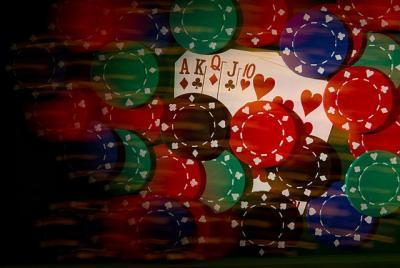A new survey by the University of Iowa says casino growth in the state has not influenced gambling by residents. It instead suggests that fewer Iowans gambled overall and also that fewer people have become addicted to gambling despite a recent spurt in gaming facilities.
This is good news for those of you worried about having a crack house in your neighborhood or prostitutes on street corners. They will also apparently not lead to more drug use or prostitution.
Casino gambling was introduced in Iowa in 1991 and the state currently has 21 casinos in Iowa, three licensed by the state and the others owned and operated by Native American tribes.
The survey was conducted between 2006 and 2008 during a family study of problem gambling. The
University of Iowa
partnered with the Center for Social and Behavioral Research at the University of Northern Iowa on the poll. It asked 356 residents in eastern Iowa 18 years of age and older about their gambling activity. The respondents were slotted according to the South Oaks Gambling Screen (SOGS), a measure that ranks gambling behavior on a five-point scale, from no problems to addiction.
Then the authors compared the results to similar surveys done in 1995 and 1989. The researchers report that the percentage of people who didn't gamble had risen to 83 percent in the most recent survey, versus 72 percent in the 1995 poll. Moreover, the percentage of non-gamblers in the latest survey was nearly as high as the 86 percent of Iowans who reported not gambling in the 1989 poll—before any casinos had been built in the state.
Professor Donald Black, in psychiatry the University of Iowa, has been studying gamblers and gambling habits since the late 1990s. He says the findings could affect expansion plans by casino operators and may influence how policymakers in Iowa regard approval of new casinos.
"It seems society reaches a saturation point beyond which additional gambling opportunities won't capture more people," says Black. "And that applies to problem gamblers, too. They all seem to adjust to it."
The prevalence of addicted gamblers, those with the highest ranking on the SOGS scale, also dropped in the most recent survey, from nearly 2 percent of respondents in the 1995 survey to 1.4 percent in the latest poll. This, despite a doubling in the number of casinos—from 10 in 1995 (including three racetracks that added slots that year) to 21 currently.

More casinos does not lead to an increase in gamblers, says a survey analysis. So casino owners are pretty stupid. Or surveys are wrong. Credit: Tim Schoon, University of Iowa
Still, the number of self-reported gambling addicts was far higher than the 0.1 percent who claimed a gambling addiction in 1989.
That suggests "casinos have had a great impact (on problem gamblers)," Black notes, "but it has stabilized."
Bolstering that notion, the percentage of residents who say they gamble occasionally (ranked 1 or 2 on the SOGS scale) had dropped to 14 percent in the latest survey from 23 percent in the 1995 survey.
Black adds that the results, although limited to Iowa, should hold true elsewhere. He said the findings substantiate a theory, championed by Howard Shaffer, a psychologist at Harvard Medical School, who looked at the impact of gambling in casino-rich Nevada and found that the number of people addicted to gambling was not disproportionately higher than other states.
Black likens the public's fascination with casinos as a child with a new toy. Sure, it's interesting at first, but at some point "it's lost its novelty," he says.
Published in Annals of Clinical Psychiatry.






Comments